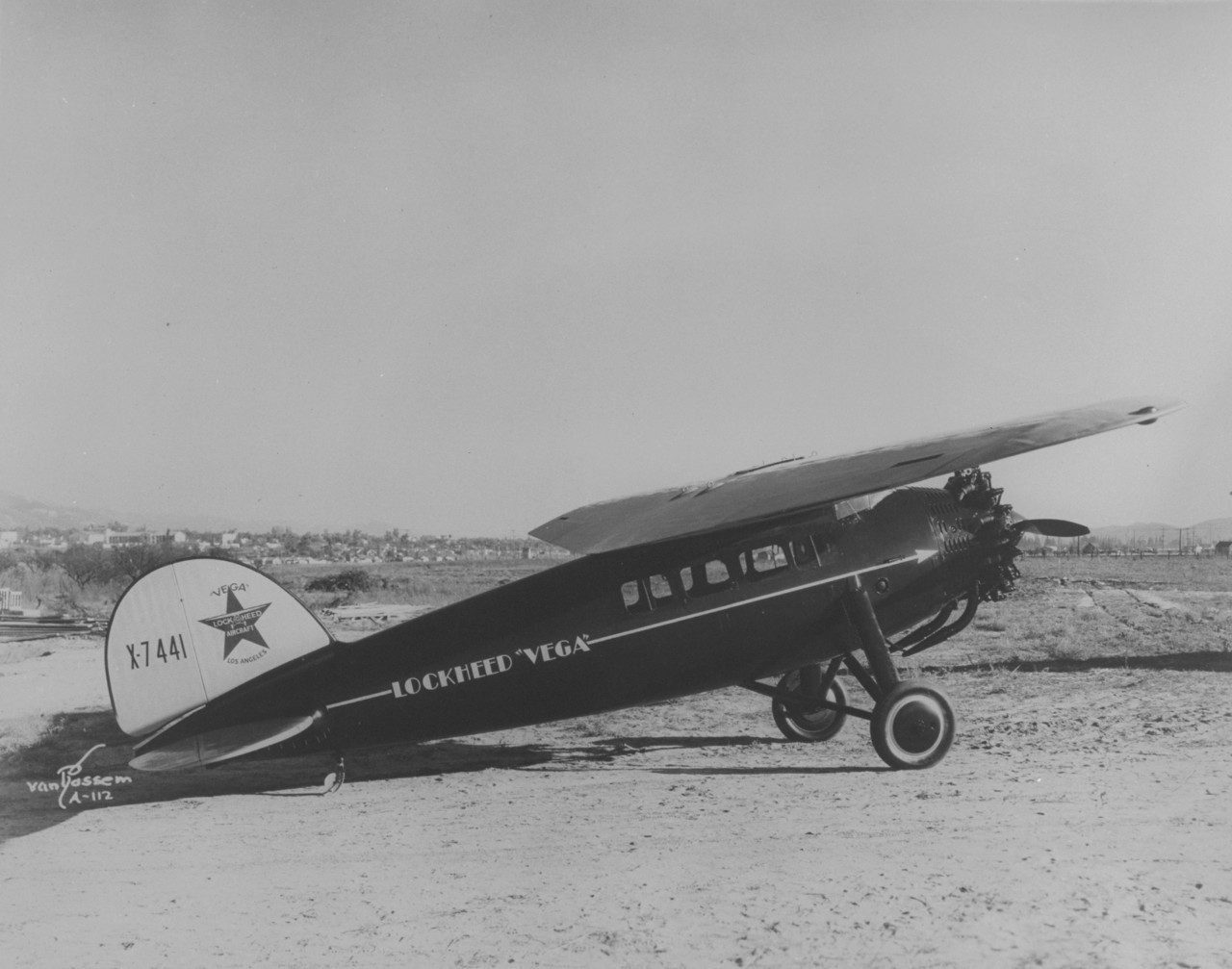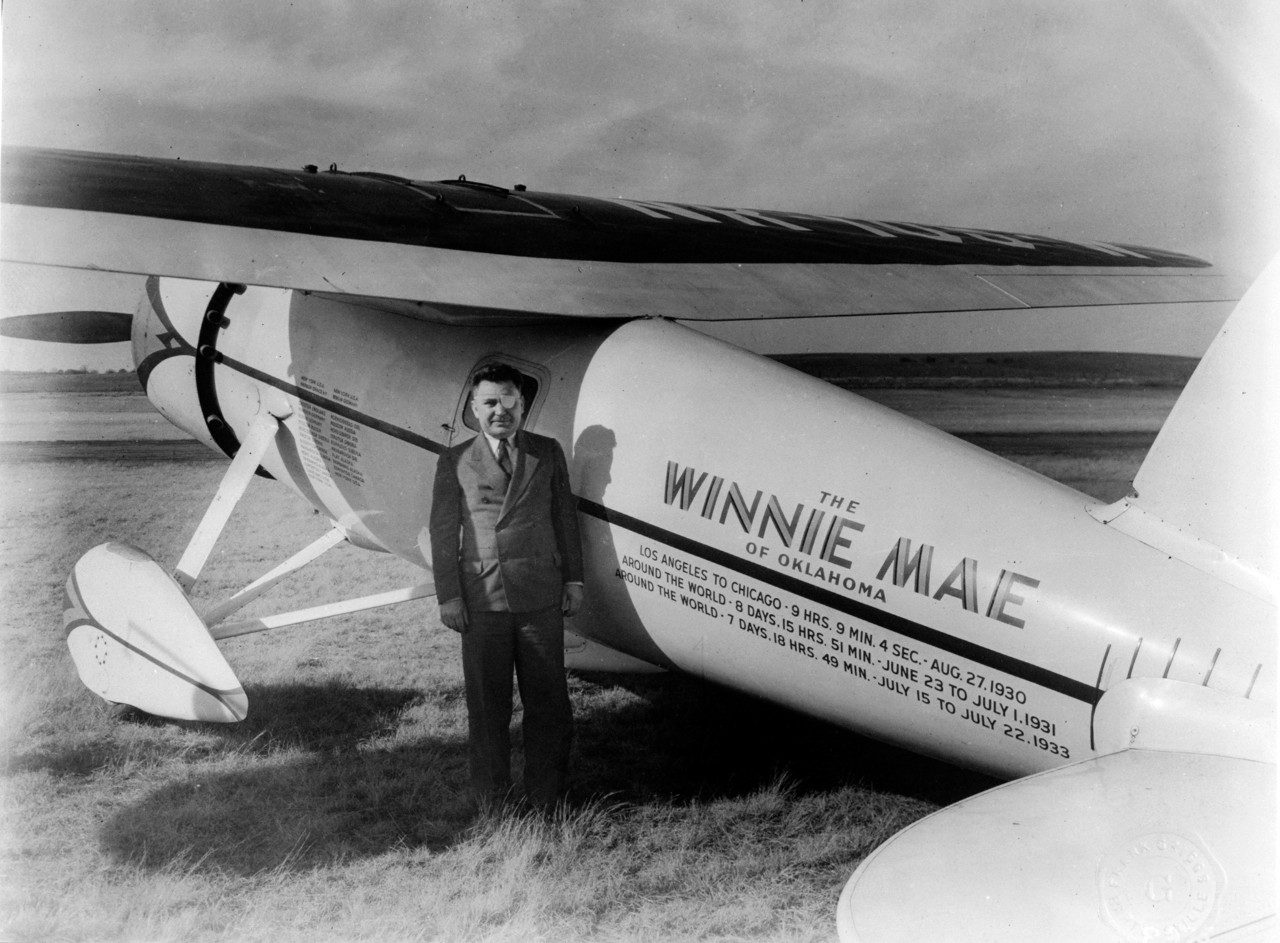On the afternoon of July 4, 1927, a striking new airplane—looking sleeker, yet sturdier than any of its contemporaries—was taxied onto a runway in Burbank, California carrying the uncertain fate of the Lockheed Aircraft Company squarely on its graceful cantilevered wings.
Coming in the wake of Charles Lindbergh’s landmark transatlantic flight just two months earlier, the plane arrived during a time of unprecedented aeronautical fever, with daredevils of every stripe lining up for air races and aeronautical challenges, all seeking fame and instant stardom.
For the right company, with the right airplane design, a special place in the history books awaited. Young Allan Lockheed and his team had wagered their company’s future on a plane constructed entirely out of wood, using patented techniques they had created and refined ten years earlier.

Knock on Wood
At the heart of the Vega’s revolutionary design was its incredibly light yet durable fuselage, built by taking spiral strips of vertical-grain spruce, laying them in concrete molds and sealing them together with waterproof glue.
The resulting solid cigar-shaped fuselage meant a more powerful engine—up to 650 horsepower—could be mounted, which allowed the Vega to reach speeds of up to 226 mph. The Vega stood out among its contemporaries. It handled more predictably, was more durable than its competitors, and was much faster. It was a winning combination.

It Takes a Lockheed to Beat a Lockheed
After Australian explorer George Hubert Wilkins, gazing serendipitously out of a San Francisco hotel room window, caught a glimpse of a Vega in flight, he immediately rushed out and purchased one, using his Vega as a groundbreaking scientific instrument for exploration and discovery.
In 1928, flying his Vega through blinding blizzards and temperatures that dipped as low as 48 degrees below zero, Wilkins not only mapped out early Arctic air routes but also surveyed some 100,000 miles of previously uncharted territory in the Antarctic, christening one mountain range “Lockheed” in honor of the company that built his airplane of choice.
In the ensuing years, aeronautical luminaries from Amelia Earhart and Charles Lindbergh to Wiley Post would employ Vegas to shatter speed marks, distance records and establish the first passenger plane routes to South America and Asia. The aircraft’s many speed records prompted Allan Lockheed to coin the phrase, “It takes a Lockheed to beat a Lockheed,” a statement fitting not only for the iconic Vega but for generations of aircraft that would follow in its wake.
Sources and Additional Reading
- Boyne, Walter J. Beyond the Horizons: The Lockheed Story. New York: St. Martin’s Press, 1998.
- “Material World.” Flying. May 1984.
- Ngo, Dung and Eric Pfeiffer. Bent Ply. New York: Princeton Architectural Press, 2003.




